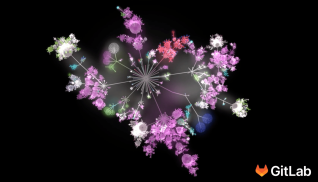Communicating clearly is important in almost every profession, but if you work
remotely (or if you hope to integrate remote working into your company culture),
it’s indispensable. In this post, we’re looking at how solid communication can be
implemented—as in a set of rules, like we have here at Gitlab—and
why you should think about doing just that.
Asynchronous Communication, So Everyone Can Focus
“Asynchronous communication” means we’re all getting information from each other
at a time when we can handle it—usually not “live.” This is important for the
very simple reason that most programmers need head space to focus on what we do.
You can minimize interruption by setting up a “preference list” for how to contact
your remote team. At GitLab, issues are most preferred, then email, then chat.
Asynchronous also refers to the fact that you’re not expected to immediately
respond if, for example, a colleague or even your boss emails you on the weekend.
Just reply on Monday. Likewise, if something is urgent, we encourage team members
to go ahead and ping someone on chat whenever—that’s how we know it’s urgent.
Go Public, Not Private
We find that our team functions most smoothly when people ask a lot of questions,
and open those questions out to everyone. This means going via issues or public
chat channels versus person-to-person emails or private messages. Why? Because
then you get answers faster, and also this way everyone sees the answer – which
saves time for the team in the long run, because that question was bound to come
up again.
If you urgently need an answer from one person (and you know that person is the
one with the answer you need) mention them by name. This still gives others
the opportunity to learn and chime in.
One Thing at a Time
One thing that happens a lot is that someone will pack several questions into a
single email, and then something in that email (or post, or whatever) gets
forgotten about and isn’t ever resolved, or there’s a big delay on one item
that affects everything else. This is one way things fall through the cracks.
To keep that to a minimum, we ask our team to stick to one question or problem
per email/issue. This also makes it easier to search for issues in your comms
archives.
Links! Links!
If you mention something like a website or document in your message to the team,
if possible include a link. This shortens the time it will take for people to
find that item, and it decreases opportunities for confusion.
Reply UNTIL IT’S DONE.
We always reply to emails, even when no action is needed, just to let the other
person know the email was received. A thread is considered finished for us when
there’s a single word reply, like “ok” or “thanks” or “done.”
Be a Human
Obviously all these rules can seem, eh, a little robotic at first. It’s also
important to actually be a human being, not just disembodied text. If you’re on
video chat—which you can and should do, especially if you find you’re going back
and forth over chat—have your kid/wife/husband/etc. pop their head in and say
hello, because this is one of the great perks of remote working! Also this way
everyone knows you’re not AI.
I really want to thank @gitlab for this document, the communications section is changing how I lead.https://t.co/Bsvzpon0pE
— Jesse Noller (@jessenoller) March 16, 2016
Also, say thanks to your coworkers to let them know that you know THEY’RE human,
too! We have a “Thanks” chat channel just for this purpose, where we ask GitLab
employees to mention each other by name and say thanks for specific things.
It just makes things nicer.
Have an idea for something we missed? Mention it in comments. Also feel free to
steal our entire communications handbook. That’s why we put it online!




